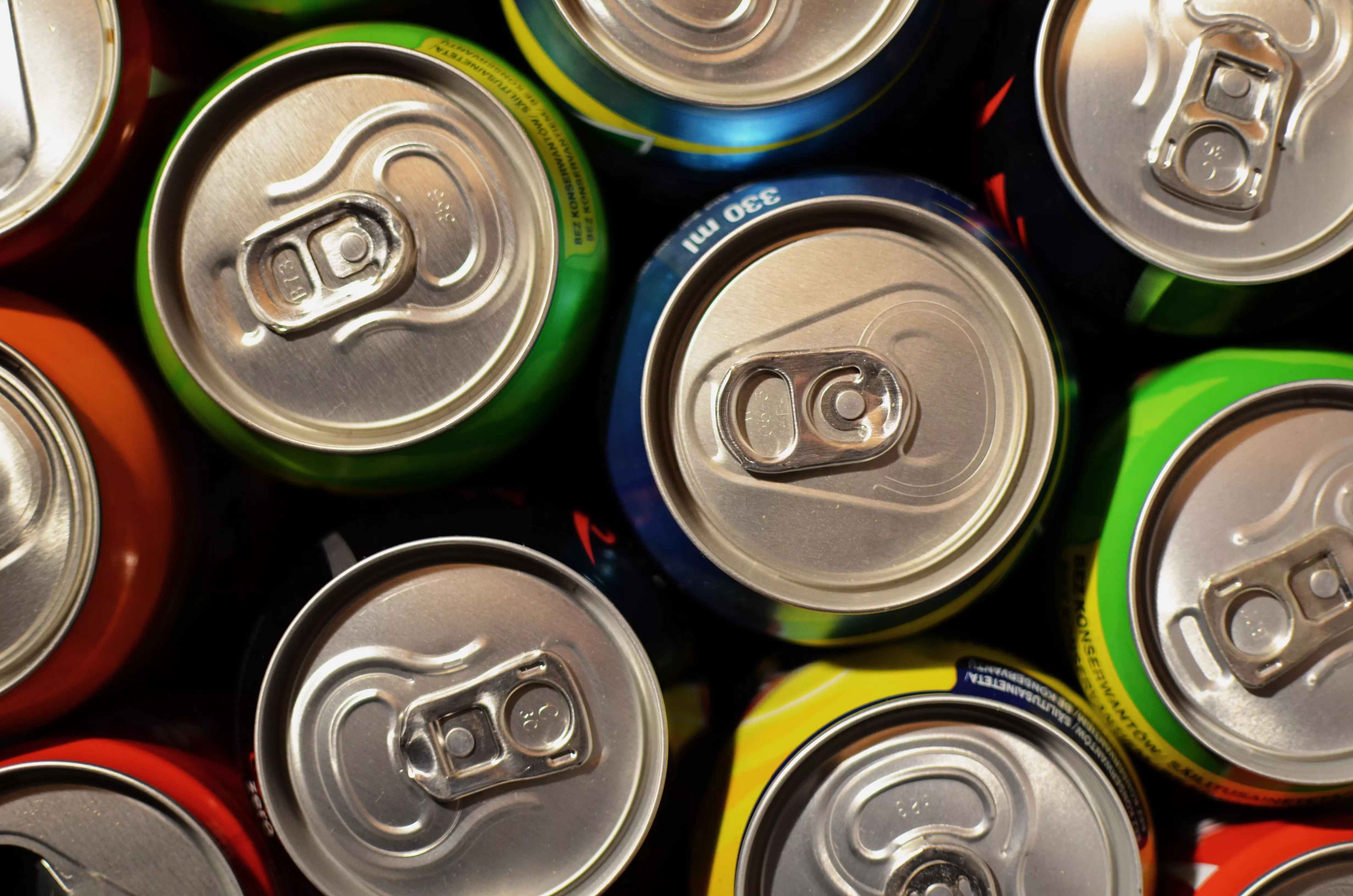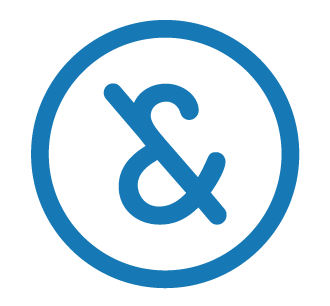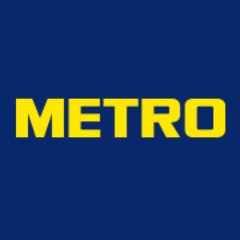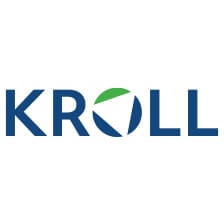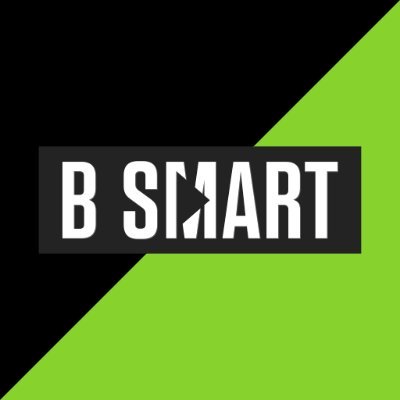Detailed content of our market study
 Inforamtion
Inforamtion
- Number of pages : 35 pages
- Format : Digital and PDF versions
- Last update :
 Summary and extracts
Summary and extracts
1 Market summary
1.1 Definition and presentation
The non-alcoholic beverages market comprises several types of beverages, mainly marketed through food distribution channels, such as supermarkets and grocery shops, and food service. Non-alcoholic beverages include:
- still and sparkling water
- sparkling drinks
- flavoured waters
- fruit juices and vegetable centrifuges
- energy drinks
- non-alcoholic beers
Within the scope of this study, we are not going to include fruit juices as part of the soft drinks category, as we already treated this type of drinks in a specific study.
The global soft drinks market is expected to grow at a rate of 8.20% until 2027. The growth of the market is driven by the current health trends and the increasing body care of citizens, coupled with the growing inclination towards healthy beverages. In 2019, Asia held the largest share of the soft drinks market, followed by the U.S. and Europe. The European market is expected to witness significant growth due to declining consumption of alcoholic beverages and growing popularity of healthy products.
In 2019, the Italian beverages market consisted of 77% non-alcoholic beverages and 23% alcoholic beverages in terms of litres consumed. Consumption of fruit and vegetable juices and nectars decreased by -3.3% in the last year, while consumption of mineral water and still drinks increased. Overall, soft drink consumption grew 1-3% in 2019. The market is highly concentrated, with a few national and international players dominating the market.
Overall, the market is driven by various innovations, especially in packaging and new formats, and by investments in marketing to stimulate demand in a sustainable way. Recent years have also seen a general increase in prices.
In the aftermath of the Covid-19 pandemic, market turnover has been supported by online sales and the continuity of production in the food sector. However, the hotel industry's results are negative, recovering only during the summer.
1.2 A European market on the rise
The NACE code "C****" entitled "Mineral and other bottled water and soft drink industry" is used to obtain information related to the turnover of the soft drink market.
Evolution of the European turnover for the NACE code "C****" EU **, ****-****, in billion euros Source: ****
As a result, the European market for mineral and bottled waters and soft drinks grew by almost **% between **** and ****, as shown in the graph above.
Turnover of the main European countries for the NACE code "C****" Europe, ****, in billions of euros Source: ****
France is thus the leading European country in terms of sales of soft drinks. It is closely followed by Germany, then by the United Kingdom and Spain who are neck to neck.
Traditional CSDs (***) have a very high sugar content and their excessive consumption causes many health problems, which has led various governments to launch awareness campaigns against these products. The market growth will therefore be in other segments, such as "light" or "zero" drinks that contain little or no sugar.
1.3 Italian Market
The production and sale of non-alcoholic beverages in Italy employs **,*** full-time equivalent jobs in activities related to the production, processing and marketing of the sector's products.
The actors involved in the supply chain generate an added value of *.* billion euro and contribute to the Italian state coffers with taxes and contributions for a total value of *.* billion euro [***].
Italians drink ** liters of soft drinks a year, a per capita value that relegates the Italian market to last place in the European Union consumption rankings, together with Greece (***) [***].
In order to have a better idea of the size of this market, we can look at the value of its different products for the sales in Iper/Supermarkets and Traditional Retail Stores.
Value of the sales of soft drinks in Iper+Super+Traditional Retail, by type of drink Italy, ****, in million euros Source: ****
Another important characteristic of the market is the strategic link with the territory, which is evident given the extensive use of Made in Italy supplies (***) [***].
1.4 Imports and Exports
In order to understand the involvement of Italy in the international trade of soft drinks, we had a look at the data relative to the HS code **.**.**: Non-alcoholic beverages; non-alcoholic beer available on UN Comtrade.
As you will see in the following graph, it is clear that Italy is a net importer of these products as imports have been significantly higher than exports in the past * years as it can also be noted looking at the foreign trade coverage rate (***) which is consistently lower than ***%. In particular, in the past two years this difference between the two trade flows has become more significant with imports decreasing and exports increasing.
Imports, Exports and Coverage Rate for HS Code ****** Italy, ****-****, in million euros and % Source: ****
For what concerns the main supplier countries which make up the value of the large imports of soft drinks in Italy, the graph below shows Poland in a dominant position (***) followed by Slovenia, Germany, the Netherlands and Belgium which however all represent percentages of the total lower than **%. Breakdown of imports, by main supplier countries Italy, ****, in % Source: ****
We can notice the same pattern for Italy's customer countries as we see one country, in this case Switzerland, ...
1.5 COVID-19 Impact
The soft drinks sector has been hit hard by the Covid-** emergency and the introduction of the Sugar Tax scheduled for January the *st ****, which we will discuss in section *, risks causing new and heavy effects on the market with obvious repercussions on the economic values and employment expressed by the entire supply chain.
As a consequence of the Covid-** emergency, Italian GDP contracted by *% in **** compared to ****, as did the spending capacity of households. At the same time, food consumption fell by -**% compared to ****, a trend mainly linked to the closures and restrictions affecting HORECA.
The non-alcoholic beverages market also suffered, closing with -**% between **** and ****. The reduction was primarily due to the mentioned difficulties encountered by the HORECA channel, essential for the health of the supply chain of this market, which closed **** with a -**%. On the other hand, sales in supermarkets resisted the crisis and maintained similar levels as the pre-pandemic world. Nonetheless, the overall soft drinks consumption has suffered significantly also due to the contraction of tourist flows and the spread of remote study and work modes (***).
The graph below shows the negative effects mentioned through the analysis of total consumption of soft drinks in Italy. ...
2 Demand analysis
2.1 Demand Characteristics
We have said that, as of ****, Italians consume a total of **liters/capita in a year. To have an idea of the evolution of the demand for these products, it is therefore useful to have a look at the numbers of this consumption over the years.
Evolution of per capita consumption of soft dinks Italy, ****-****, in liters/year Source: ****
As the graph above shows, the per capita consumption of soft drink in this country has been on a declining trend in the past ** years, with some fluctuations in the last couple of years which, however, ended up making the market settle down in **** to much lower levels with respect to **** (***).
Always considering the consumption of the Italian population, we can derive a breakdown of the types of soft drinks which are more appreciated in this country.
Breakdown of the consumption of soft drinks, by type of drink Italy, ****, in % Source: Beverfood From the breakdown above, a clear prevalence in carbonated drinks consumption emerges, defining the demand for these products as more oriented toward this specific category.
2.2 Geographic Distribution of Soft Drink Demand in Italy
A good indicator of demand for any product is the average expenditure of consumers for that product. Indeed, excluding goods which satisfy essential needs, consumers that spend more on a certain product, in this case soft drinks, are more likely to spend more on it also in the future and therefore represent an essential component of its demand.
Istat provides data on the monthly average expenditure of Italian families on nonalcoholic drinks, including mineral waters and fruit and vegetable juices. The following graph shows the evolution of this expenditure over the period between **** and ****.
Evolution of average monthly family expenditure on soft drinks Italy, ****-****, in euros Source: ****
The graph above shows some fluctuations over the years, with a general increasing tendency between the beginning and the end of the period. The average monthly expenditure on soft drinks of Italian families has indeed grown by *.*% between **** and **** (***).
Thanks to these data provided by Istat we can also build a map to have a look at the differences between Italy's areas in terms of family expenditure on soft drinks.
As the map below shows, and impressively so, average monthly expenditure on soft drinks is higher in the south and in the Islands, ...
2.3 Bio and Vintage Soft Drinks Attract Always More Italians
According to Assobibe, soft drink consumption has fallen by **% since ****. The good news is that manufacturers have reduced calories by **.*% and sugar by **% over the same period. Moreover, Italians are increasingly choosing wellness drinks, sports drinks (***) and specialty drinks, an indication of the fact that health is becoming a primary concern in this country, even when enjoying a soft drink.
Even over a drink or an apéritif at the bar, there is no doubt that Italy is a country that looks backward more than forward. Italians, in general, take comfort in the flavors and images of the past.
On the shelves, the bottle labels preferred in this country offer reassurance with words like: "true", "authentic", "original". The recipes are old, the taste is retro, the graphics old-style.
Among the very Italian legends of the market is Tassoni citron liqueur, the flagship product of the virtuous Salò-based company that continues to grow thanks to its total respect for tradition. No plastic, only glass bottles, the same style graphics, the same commercial from **** are the characteristics that make this product, among others, a personal favorite of most Italians who tend to trust the past more than the future.
Another example are ...
3 Market structure
3.1 Structure and Dynamics of the Market
The companies active in this market, although grouped in a single study, nevertheless belong to two different markets with different competitive dynamics.
The mineral water market is predominantly composed of highly focused companies, while in the soft drinks market there are also companies specialized in a completely different production, such as Parmalat and Barilla.
Food companies that expand their range with non-alcoholic beverages, very often fruit juices, usually bring them to the market under a brand name created ad hoc, such as Parmalt's Santàl and Barilla's Alixir [***].
The Italian market, as represented by the ****-**** Bevitalia yearbook, is a market where about ** companies operate as we will see in the next paragraph, but with a high concentration: the top * (***). The remaining **% is made up of smaller producers, who often stand out for their lively distribution throughout the territory and their ability to intercept a niche audience thanks to their quality and/or organic products, their respect for local traditions, their link with the world of blending and their clearly vintage and autarkic aesthetic [***].
The ** soft drinks companies operating in Italy have strong relationships with both upstream players in the supply chain, i.e. suppliers of goods and services, and downstream ...
3.2 Geographic Distribution of Production
Overall, the Italian market of soft drinks is composed of ** companies and *** plants. As it can be seen from the map below, the producers are mainly present in the northwestern regions (***) [***].
Geographic Distribution of the Soft Drinks Producers
Italy, ****, in %
Source: ****
3.3 Distribution Channels
The Italian consumption of soft drinks is made up of approximately **% of domestic consumption, mainly (***) by small retailers which, in addition to traditional foodstuffs, also include dairies, bakeries and other specialized outlets.
The remaining **% of consumption happens through the out-of-home sales and service points which refer to the various HoReCa channels (***), as well as catering outlets and vending machines. This side of consumption constitutes a smaller portion of the total in terms of volume, but it definitely represents a greater portion in terms of value, as the prices per liter in this segment of the market are always higher than the domestic consumption outlets ones.
Breakdown of distribution channels of soft drinks, by venue of consumption Italy, ****, in % Source: ****
Focusing on the domestic consumption, we can see from the graph below how the greatest percentage of the total liters of soft drinks sold in Italy is distributed though Iper and Supermarkets (***).
Breakdown of distribution channels of soft drinks, by distribution channel Italy, ****, in % Source: Beverfood
3.4 Market Shares
The main brands of the top * production groups of soft drinks in Italy are:
Coca-Cola HBC Italia (***), Sprite, Kinley, Fuzeta, Powerade, Royal Bliss, Honest, AdeZ, Burn, Monster, etc. San Benedetto (***): Schweppes, Energade, San Benedetto drinks, San Benedetto baby drinks, Amor Mio, Ben's, San Benedetto Thè, Aquavitamin, etc. Sanpellegrino (***), Sanbittèr, Gingerino, Acqua Brillante, Levissima+, etc. Spumador (***): Spumador, Recoaro Bio, Dorino, Aperì, Dortè, Sancarlo, Springto, Beltè, Private Label for GDO
The following graph shows the market shares of the different companies.
Market Shares of the main players of the soft drinks market Italy, ****, in % Source: ****
4 Analysis of the offer
4.1 Offer Typology
Refreshing drinks include several product families. The types of non-alcoholic refreshment beverages (***) include these different product families in Italy [***]:
Colas Still or sparkling fruit drinks Lemonades, lime, tonics Tea-based drinks (***) Coffee-based drinks Energy and sport drinks Non-alcoholic aperitifs Flavored waters
Non-alcoholic refreshment beverages are divided into two main categories: soft drinks and syrups and concentrates.
There are two sets of soft drinks:
Carbonated drinks: concocted from a mixture of carbonated water and various concentrates. There are of course colas, bitters, tonics, flavored sodas, energy drinks and fruit-flavored soft drinks. Still fruit drinks: the composition is simple, water, sugar, and a minimum of **% fruit juice. May contain colorants and taste correctors.
The preparation of sodas requires three main elements, which are:
Water: **% to **% of water is used in soda, and this water undergoes several types of treatment to soften or defer it. Sugar: *% to **% sugar, mainly sucrose (***). The concentrate: mainly from abroad.
Fruit juices and nectars are separate and constitute another type of product with its own characteristics.
4.2 Consumer Price Index
In order to analyze the pricing of soft drinks in Italy and its evolution over time, we need to start by looking at the CPI which measures the average price changes of goods and services purchased by households.
The graph below shows the evolution of said Index. Even though we see a fluctuating trend in the period between **** and ****, overall prices of soft drinks in Italy have increased by *.* percentage points.
Consumer price index for soft drinks Italy, ****-****, in index (***) Source: ****
4.2 A variety of Prices that Reflect the Diversity of the Offer
With the diversity of the offer that is inherent in the soft drinks market, the price range of its main products is quite large. In order to have an idea of such diversity, it might be useful to have a look at prices for different types of soft drinks, according to their range level, as listed by one specific supermarket, Coop.
Source: ****
It is clear that private label products, in this case Coop, are sold at prices well below those of competitors. Overall, the major brands enjoy greater consumer interest (***). Certain brands such as Estathé or Coca-Cola are the leaders in their segment.
Other, lesser-known brands must therefore stand out via innovative recipes, different packaging or a greater transparency.
Finally, the packaging plays an important role in the price at which soft drinks are sold. The smaller the format, the higher the price per liter (***).
5 Rules and regulations
5.1 Rules and Regulations
For what concerns the production of soft drinks, the Presidential Decree No *** of ** May **** lists the substances which may be used.
If a new substance other than those listed in Presidential Decree No. ***/**** is to be used in the production of soft drinks, Article **, third paragraph, of the aforementioned decree, amended by Presidential Decree No. ***/****, requires the company to notify the Ministry of Health and the region and autonomous province with territorial jurisdiction over the production plant, before starting production, in which the scientific documentation relating to the suitability of the new substance for human consumption must be reported.
The Ministry of Health, after verifying the actual suitability of the substances, object of the communication, for human nutrition, also through the consultation of the competent technical and scientific bodies, proceeds to its approval with the publication of a notice in the Official Gazette and on the web portal of the Ministry.
It should be noted that the communication procedure in question does not apply to ingredients falling within the scope of Community Regulation No ***/** (***).
Please note that enriched beverages remain subject to the label notification procedure at the time of their marketing, pursuant to art. * of Legislative Decree no. *** of ** January ...
5.2 The 2022 Sugar Tax
The Italian sugar tax, which should take effect starting from ****, establishes a single rate of ** cents per liter for soft drinks containing more than ** grams of sugar per **** milliliters, which corresponds to about * cents for a *** milliliter can.
Most soft drinks on the market fall within this range, even though the tax is not progressive, and the only parameter of application remains the above-mentioned threshold. Like other similar examples around the world, this measure should be designed to encourage companies to reduce the amount of sugar, which children in particular often abuse, exposing them to health hazards, starting with obesity.
Overall, with the introduction of the Sugar Tax in Italy, the market in **** is expected to contract by **% in volume compared to **** which will be decomposed between a loss of turnover for manufacturers (***). In particular, expenditure on plant and machinery, sustainability and innovations, which are essential for increasing the competitiveness of the sector, will be affected [***].
That is why, as mentioned before, the leaders of the sector should focus on creating and experimenting new recipes with lower sugar components and healthier ingredients in order to resist the impact this new tax will bring upon them.
6 Positioning of the actors
6.1 Segmentation
- Coca-Cola HBC Italia
- Nestlé Groupe
- San Benedetto
- Sanpellegrino
- Refresco
- Coop
- Conad
- Carrefour Italia
- Refresco
All our studies are available online in PDF format
Take a look at an example of our research on another market!
 Choosing this study means :
Choosing this study means :
Access to more than 35 hours of work
Our studies are the result of over 35 hours of research and analysis. Using our studies allows you to devote more time and added value to your projects.
Benefit from 6 years' experience and over 1,500 industry reports already produced
Our expertise enables us to produce comprehensive studies in all sectors, including niche and emerging markets.
Our know-how and methodology enable us to produce reports that offer unique value for money.
Access to several thousand articles and paid-for data
Businesscoot has access to all the paid economic press as well as exclusive databases to carry out its market research (over 30,000 articles and private sources).
To enhance our research, our analysts also use web indicators (semrush, trends, etc.) to identify market trends and company strategies. (Consult our paying sources)
Guaranteed support after your purchase
A team dedicated to after-sales service, to guarantee you a high level of satisfaction. +44 238 097 0676
A digital format designed for our users
Not only do you have access to a PDF, but also to a digital version designed for our customers. This version gives you access to sources, data in Excel format and graphics. The content of the study can therefore be easily retrieved and adapted for your specific needs.
 Our offers :
Our offers :
the soft drinks market | Italy
- What are the figures on the size and growth of the market?
- What is driving the growth of the market and its evolution?
- What is the positioning of companies in the value chain?
- Data from several dozen databases
5 reports pack (-15%) IT Italy
- 5 reports at €75.6 excluding VAT per study to choose from our Italian catalogue for 12 months
- Save 15% on additional studies purchased
- Choose to be refunded any unused credit at the end of the 12-month period (duration of the pack)
See the terms and conditions of the pack and the refund of unused credit.
